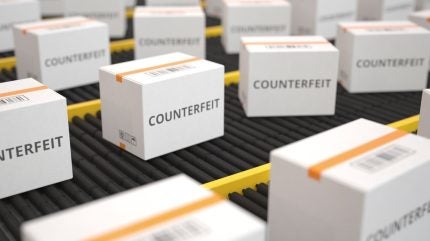
The rise of counterfeit goods presents a significant challenge to businesses and consumers alike. From pharmaceuticals to luxury goods, counterfeit products not only erode brand trust but also pose serious health and safety risks.
As counterfeiters become more sophisticated, so must the packaging industry.
Counterfeit-resistant packaging has emerged as a crucial tool in the fight against fraudulent products, combining innovation, technology, and regulation to ensure authenticity and security.
Advanced security features in packaging
To combat counterfeiting, companies are incorporating advanced security features into their packaging designs. One of the most effective measures is the use of holograms, which provide a visually distinctive and difficult-to-replicate authentication marker.
These are often combined with colour-shifting inks and microtext that require specialised equipment to reproduce.
Another powerful tool is the integration of QR codes and RFID (Radio Frequency Identification) technology. These allow consumers and retailers to verify a product’s authenticity by scanning the code with a smartphone or using RFID readers.
Some brands have also adopted blockchain technology, creating an immutable record of a product’s journey from manufacturer to consumer, making it nearly impossible for counterfeiters to insert fake goods into the supply chain.
Tamper-evident seals and smart labels further enhance security. These features ensure that once a package is opened, it cannot be resealed without visible signs of interference.
The latest advancements include intelligent packaging that changes colour or displays messages when tampered with, providing instant confirmation of authenticity.
Industry-wide collaboration and regulation
Governments and industry bodies are increasingly recognising the importance of counterfeit-resistant packaging.
Many regulatory frameworks require manufacturers to implement anti-counterfeit measures, particularly in sensitive industries like pharmaceuticals and food packaging. The European Union’s Falsified Medicines Directive (FMD) and the US Drug Supply Chain Security Act (DSCSA) mandate serialisation and traceability systems that help track each product’s origin and distribution path.
Beyond regulatory requirements, collaboration between industry players is crucial in developing more effective solutions.
Many companies are partnering with security specialists and technology firms to design packaging solutions that are both secure and cost-effective. Shared databases and verification platforms enable real-time tracking and authentication, making it harder for counterfeiters to infiltrate legitimate supply chains.
Consumer education also plays a vital role. Brands are increasingly encouraging customers to verify their purchases using online platforms or mobile apps.
By empowering consumers to authenticate products themselves, businesses create an additional layer of defence against counterfeit goods.
The future of counterfeit-resistant packaging
The future of counterfeit-resistant packaging lies in continuous innovation and integration with emerging technologies.
Artificial intelligence (AI) and machine learning are being leveraged to detect counterfeit patterns and anomalies in supply chains. AI-driven image recognition tools can instantly identify fraudulent packaging designs, helping brands take swift action against counterfeiters.
Nanotechnology is also making its way into packaging security. Invisible nanoparticle tags embedded in packaging materials can only be detected using specialised scanners, making counterfeiting nearly impossible.
Similarly, DNA-based markers, which can be verified in a laboratory, provide an ultra-secure method for distinguishing genuine products from fake ones.
Sustainability considerations will also shape the future of counterfeit-resistant packaging. As brands move towards eco-friendly solutions, they must ensure that security features do not compromise recyclability or biodegradability.
Researchers are exploring biodegradable security inks and tamper-proof biodegradable seals to align security with environmental responsibility.
In an era where counterfeiting threatens consumer safety and brand integrity, the role of counterfeit-resistant packaging has never been more critical.
By investing in advanced security features, fostering industry collaboration, and embracing emerging technologies, brands can stay ahead of counterfeiters while ensuring consumer trust and safety.
As technology evolves, so too will the strategies used to combat counterfeiting, making the future of packaging both secure and sustainable.



